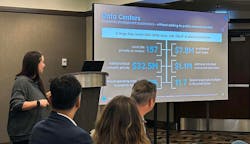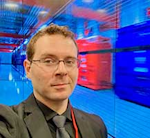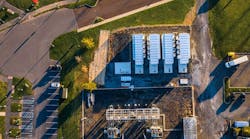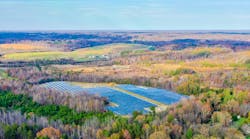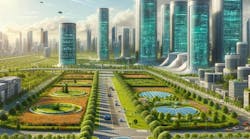With the boom in data center development, local communities have become integral to bringing critical infrastructure online. Meanwhile, cloud platforms have become major players in the transition to a greener economy.
The impact of data centers on communities and the environment were among the priority topics of discussion at the 2023 iMasons Member Summit last week in San Francisco. The fun part about iMasons meetings is that they are interactive and always informative, and we also come away with action items.
For those not already familiar, the Infrastructure Masons was created to chart a course for the fast-growing cloud economy as the "builders of our digital age." The group has been a leader on sustainability, creating the iMasons Climate Accord. Here are the highlights from the iMasons summit discussions.
Contextual Understanding of Local Communities
Rich Miller wrote about the impact of NIMBY (Not In My Backyard) on the data center industry back in 2015. He followed this up with a much more recent article outlining how Community resistance is becoming a real challenge in some of the most important data center markets. That includes Northern Virginia, where data center development creates heated debate in Prince William County, an important expansion market.
During our iMasons meeting, we divided into groups to discuss emerging challenges facing the digital infrastructure industry. In those breakouts, we learned there is still a vast misunderstanding about what data centers do and how they operate. Media coverage often tells only half the story. Concerns about “data centers” have been amplified by the surge in sustainability-challenged bitcoin mining operations in the past year as capacity has shifted from China to the U.S.
In our group discussions, we concluded that we needed deeper, more meaningful relationships with local communities. During one of the presentations, Courtney Popp, Educational Program Manager for iMasons, showcased how data centers and the digital infrastructure industry is an accelerators for communities.
Data center facilities often contribute to jobs and economic development. From Courtney’s presentation, we saw that a large data center (801-3000 racks, 20K-75K square feet of space) contributes the following:
- Local jobs annually on campus: 157
- Additional local economic activity: $32.5M
- Additional local wages: $7.8M
- Additional individual income and sales tax: $1.1M
- Second-largest jobs multiplier in the United States: 11.7
One of the outcomes of our conversations was that we need to become better parts of a downstream data center community. That means we become a natural part of a town, city, or municipality.
For a long time, data centers were a well-kept secret. Unfortunately, that is now creating challenges for us as we work to improve our relationships with local communities. While casting a wide net to ensure the masses know about digital infrastructure, working with individual communities more meaningfully and contextually will be crucial.
Future Infrastructure Will Need to Be Even Greener
It was fascinating to hear what leaders in digital infrastructure will be doing to support greener infrastructure. One of the conversation points revolved around the Greenhouse Gas Protocol, where we discussed the scopes categorizing the emissions companies create in their direct, indirect, and overall supply chain.
for those unfamiliar with scope, the GHG Protocol uses Scopes 1, 2 and 3 to categorize emissions .At iMasons, the conversations expanded to the not officially classified Scope 4, which accounts for emissions saved or avoided outside a product’s life cycle or value chain. Examples of Scope 4 emissions are video conferencing products and services that enable employees to work remotely. These products reduce emissions created by employee commutes and other business travel.
The discussions revolve around being more transparent about how energy is used and procured, and how leading organizations can aim to be more proactive in creating critical infrastructure. This includes working more closely with communities, working with green-focused partners, and looking at new green energy sources.
It should be noted that nuclear-powered data centers were a topic of discussion. Several mentioned how this green energy could be a viable alternative to many current energy sources for critical infrastructure. It would also further the capability to deploy essential campuses of infrastructure remotely. (Editor's note: Watch DCF for more on this topic).
Data Center Talent: Challenge or Crisis?
The topic of education deserves its article entirely. Look, here it is: How Grassroots Data Center Education Will Support a Digital Tomorrow.
The iMasons discussion around talent was vibrant and enlightening, and we all realized that the vast majority of the industry is in the same boat. An upcoming conference even has a session calling it a data center talent crisis.
While I wouldn’t use those strong words, there are challenges. As mentioned earlier, data centers were a well-kept secret where non-descript buildings housed vast volumes of servers. Now, our facilities are works of architectural ingenuity and digital creativity. Leaders in the data center space want you to see their facilities.
However, the damage was done. Many graduating mechanical, electrical, computer and even civil engineering classes missed their opportunity to work in our industry because they didn’t know we existed.
The good news is we’re on the way to righting this ship. During the iMasons Member Summit, we heard from partnering organizations that help industry leaders deliver their topics in a grassroots manner. Working with local high schools, students can immerse themselves in STEM with long-term projects and initiatives, pairing them with industry professionals. These educational programs are already done with scientists, manufacturing, business, and more. Why not have students become immersed in data centers and digital infrastructure?
During one of our conversations with a partner, JASON Learning, we discussed creating all-new modules to support a new generation of digital infrastructure professionals.
Some potential modules include:
- The Infrastructure of the Internet
- Websites: Where People Meet the Internet
- Information Literacy and Engagement
- Data Centers and the Community
- The Internet and the Environment
- The Future of Computing
The Road Ahead
It was wonderful to see so many friendly faces. The conversations we had covering sustainable infrastructure, working with communities, and empowering the future talent of our industry were exceedingly meaningful. Some essential action items included more local representation from chapters, working to create a new curriculum, and methods to work more closely with local communities. These action items are all building blocks to improve the very foundation of our digital lives.
I’m looking forward to seeing how initiatives will continue to build and shape a digital tomorrow.
